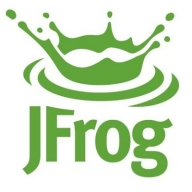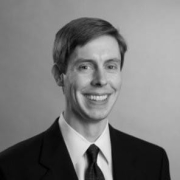


JFrog Xray and Microsoft Defender for Cloud compete in security and compliance with the latter having the upper hand due to expansive features and cloud support.
Features: JFrog Xray integrates seamlessly with DevOps, offering comprehensive artifact scanning and open-source management. Microsoft Defender for Cloud provides multi-cloud support, advanced threat protection, and extensive integrations, offering broad security coverage.
Room for Improvement: JFrog Xray could enhance ease of use, streamline initial configuration, and expand cloud capabilities. Microsoft Defender for Cloud could improve by simplifying multi-cloud integration processes, reducing alerts complexity, and enhancing user interface intuitiveness.
Ease of Deployment and Customer Service: JFrog Xray integrates well with DevOps tools, although initial setup can be complex. Microsoft Defender for Cloud benefits from being within the Microsoft ecosystem, offering a smooth deployment and substantial support resources.
Pricing and ROI: JFrog Xray's competitive pricing makes it cost-effective for open-source security users. Microsoft Defender for Cloud, while more costly, provides better ROI with extensive features and robust cloud capabilities, justifying the price through enhanced security measures.



SentinelOne Singularity Cloud Security protects cloud workloads, offering advanced threat detection and automated response. It integrates seamlessly with cloud environments and secures containerized applications and virtual machines against vulnerabilities.
SentinelOne Singularity Cloud Security is renowned for its efficiency in mitigating threats in real-time. The platform integrates effortlessly with existing cloud environments, ensuring robust cloud security management with minimal manual intervention. Securing containerized applications and virtual machines, it excels in threat intelligence and endpoint protection. However, improvements are needed in performance during high workload periods, and more integrations with third-party tools and better documentation would be beneficial. Users often find the installation process complex, support response times slow, and the dashboard's navigation unintuitive.
What are the key features of SentinelOne Singularity Cloud Security?In specific industries, SentinelOne Singularity Cloud Security is implemented to safeguard critical data and infrastructure. Organizations in finance, healthcare, and technology depend on its real-time threat detection and automated response to protect sensitive information. Its ability to secure containerized applications and virtual machines is particularly valuable in dynamic environments where rapid scaling is necessary.
JFrog is on a mission to enable continuous updates through Liquid Software, empowering developers to code high-quality applications that securely flow to end-users with zero downtime. The world’s top brands such as Amazon, Facebook, Google, Netflix, Uber, VMware, and Spotify are among the 4500 companies that already depend on JFrog to manage binaries for their mission-critical applications. JFrog is a privately-held, global company, and is a proud sponsor of the Cloud Native Computing Foundation [CNCF].
If you are a team player and you care and you play to WIN, we have just the job you're looking for.
As we say at JFrog: "Once You Leap Forward You Won't Go Back!"
Microsoft Defender for Cloud is a comprehensive security solution that provides advanced threat protection for cloud workloads. It offers real-time visibility into the security posture of cloud environments, enabling organizations to quickly identify and respond to potential threats. With its advanced machine learning capabilities, Microsoft Defender for Cloud can detect and block sophisticated attacks, including zero-day exploits and fileless malware.
The solution also provides automated remediation capabilities, allowing security teams to quickly and easily respond to security incidents. With Microsoft Defender for Cloud, organizations can ensure the security and compliance of their cloud workloads, while reducing the burden on their security teams.
We monitor all Vulnerability Management reviews to prevent fraudulent reviews and keep review quality high. We do not post reviews by company employees or direct competitors. We validate each review for authenticity via cross-reference with LinkedIn, and personal follow-up with the reviewer when necessary.